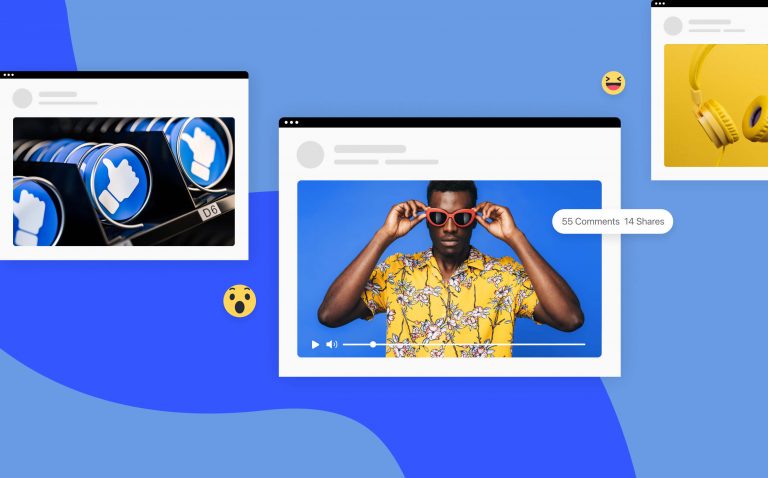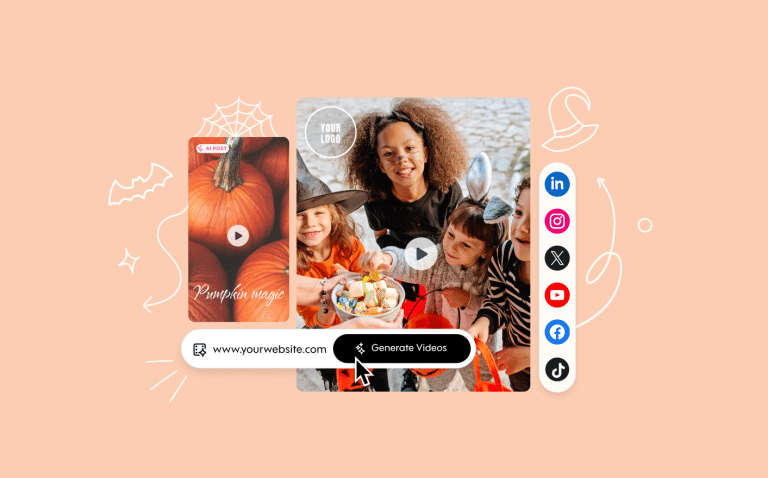
How to build a high-converting sales funnel using video
Video has become a core component of all effective marketing and sales strategies. In 2019, it made the top five content formats marketers used more, showing that it’s no longer a nice-to-have, but a must-have
In fact, it’s changed much of the way the marketing and sales funnel works today. Previously, video wasn’t as prominent a tool for marketers or sales. Today, video is versatile enough to be used at every stage including sales and post-sales.

Source: Lyfe Marketing
Building a high converting sales funnel using video means producing stronger marketing and sales content. But pointing and shooting, and trying to produce videos to address every buyer challenge and pain point won’t do.
Brands need to be strategic.
They must ensure marketing videos support their goals and generate results. When it comes to sales, all marketing videos must accelerate the sales process by providing qualified marketing leads faster. For example, demo videos, like HubSpot’s Sales in Action video, show buyers how their solution works. This gives buyers a sense of familiarity with the brand and software before becoming customers.
While marketers are more familiar with video and its role in the inbound marketing sphere, it’s important to note that closing the sale requires more than one video.
Like written content, video can be used to attract, educate and influence buyers to become customers. More importantly, it’s essential to think of your videos as connected content pieces that help guide buyers along the journey to purchasing your solution.
However, whether you’re using more live-streaming sessions, ads, explainer or promo videos, the funnel is a machine that cannot produce results unless it fires on all cylinders.
Types of videos for your marketing funnel
Here’s a look at what your marketing videos should accomplish at each stage of the funnel to prime buyers or sales videos.
Introduce your brand at the Top of the Funnel
Buyers at the top of the funnel have just become aware of a problem, but may not fully understand it or be able to diagnose it just yet. Your top-of-funnel content introduces buyers to your brand. It also should identify at least one major challenge your buyers face and position your brand as a potential solution provider. Here, you should also create short marketing videos that are quick and easy to grasp.
Take this example from Zoho. It introduces the brand to a new audience by simply presenting a pain point and the solution that they provide. They show how easy it is to complete mission-critical tasks like VAT returns, putting a fun spin on the experience by showing it can all be done from anywhere using your mobile phone.
Drive consideration at the Middle of the Funnel
Videos created for the middle of the funnel should be designed to educate buyers. While they are introduced to your brand and identify a pain point at the top of the funnel, your audience is now ready to learn about solutions to their problem(s). Videos for the middle of your funnel should go into detail by explaining how your solution solves a problem and why it works.
For example, Agile Industrial helps manufacturing firms manage content effectively. In their short explainer video, users learn about the challenges and consequences of poor document management in detail. Agile Industrial also examines various poorly-chosen solutions buyers might choose. The video then explores an in-depth explanation of their solution and why it’s the best option.
Convert at the Bottom of the Funnel
Videos of the bottom of the funnel are used to address any lingering uncertainties about your solution. At this point, the user recognizes a problem, knows that there is a solution, but now it’s time to convince them that YOU are the best one to provide this solution. These videos go into detail about your solution/product and give buyers all they could possibly need to commit.
Case studies and video testimonials are perfect bottom-of-funnel videos. They also include demos and walk-throughs designed to give buyers a closer look at what they will be investing in. Paired with strong call to actions and offers like limited-time discounts, your bottom-of-funnel videos can help convert more visitors into customers. In this example, Will Curran, the president and founder of Endless Events shares how HubSpot has helped them see ROI for their content marketing.
Onboard and support
Video can also be used beyond the sale. In fact, today, more organizations use video onboarding programs to help retain customers who would otherwise leave due to anything from the complexity of a solution to poor customer service. Organizations now have entire libraries filled with how-to videos, tutorials, and explainers that provide quick answers to pressing questions about your product/solution.
And this is a trend Google identified as an opportunity for brands to explore back in 2018. According to the search giant, 7 out of 10 people turn to YouTube to solve a problem related to their job, studies or hobbies.
Mention is a brand monitoring software solution and they retain customers with a collection of helpful tutorials. For instance, their video on measuring alerts alongside a competitor’s is perfect for any marketing professional who needs to know how competitive their brand is. The video shows what kind of information you’ll have access to on the competitive dashboard, making it easier to use and appreciate the platform.
Sales videos vs. marketing funnel videos
The marketing cycle is fluid. It involves various methods of communication. This can be via email, social media, a landing page or remarketing video ad on YouTube. What’s important to note is that leads are people who have “raised their hands” by performing certain actions to warrant access to a sales video.
Up until now, these leads have received marketing videos throughout the funnel. Sales videos are a little more direct.
For example, ClickFunnels shows business owners that their websites aren’t the best way to get more leads or sales. They explain that traditional website designs include more distractions than helpful and easy-to-follow paths visitors follow to become leads and customers.
The solution? Business owners have the chance to learn how to create a ClickFunnel. All they need to do is head over to deathofawebsite.com and sign-up for a free class (becoming a ClickFunnels lead).
Another great way to use sales videos is by pairing them with outreach emails to your existing leads. Outreach email videos are also far more engaging than text emails and Forrester found that video can boost click-through-rates by as much as 300%.
They are also highly personalized and allow salespeople to inject more character into an email than one could share in text. Take this example from Kevin Wilson at Videolicious. He’s outreach email includes a short 1-minute video to engage a prospect.
In it, Kevin is able to communicate at a deeper level by offering context for why he’s sending the message. While he uses footage that’s edited into his video, yours doesn’t have to.
https://youtu.be/M5AFPRc-Alg
Connecting the dots & promoting your videos
Marketing is never done. And when it comes to finding ways to attract and funnel more buyers to become marketing qualified leads, you need to explore as many viable channels as possible.
Together, these channels act as conduits to drive traffic to your content and leads into your funnel. How do you find the right channels?
It all starts with personas. If you’ve done a thorough job of identifying your ideal customer, you’ll have a good idea of where they go for information on solving a problem related to a solution like yours.
These places could be Facebook, LinkedIn, Twitter, YouTube or retargeting buyers on niche industry websites. And don’t forget email. It’s still a viable and effective marketing channel that’s proven to generate as much as $38 in ROI or every $1 spent.
Your goal is to position your content strategically in front of your buyers and this also involves positioning content to support videos in your funnel (think downloadable content and lead magnets, ads to drive webinar and demo sign-ups).
Conclusion
Building a high-converting sales video requires strategic thinking. Video, like other forms of content, is a tool that marketing and sales need to be able to wield to generate results. It requires marketing to create a buyer’s journeys filled with connected messaging, all geared towards feeding sales more qualified leads.
For sales, video should be seen as a powerful tool for establishing strong and meaningful relationships. While you don’t have to produce a perfect video to be successful (since video is already more engaging than any other medium) salespeople have the opportunity to deliver more effective and relevant messages and generate better results with one.
To easily make effective marketing videos, head to Promo.com and get started today!


